The Enchanting Old Capital:
Historic Tainan Beckons
Cathy Teng / photos by Jimmy Lin / tr. by Brandon Yen
July 2024

The scale of Tainan’s back streets reflects their pedestrian nature. These are wonderful places to stroll in.
Those who have visited Tainan may remember losing their bearings in its winding back streets, which promise pleasant surprises at every turn. Why are there so many little streets and alleys in this historic town in Southern Taiwan? Su Feng-nan, an author who has explored the historical nuances of Tainan’s highways and byways, tells us, “As a city, Tainan didn’t take shape according to a preconceived plan. Rather, it developed organically. What we call ‘back streets’ are all part of the city’s traffic network. In bygone days, everyone used to move around on foot. So the scale of these roads reflects their pedestrian nature.”
If Tainan’s roads have been shaped by pedestrians in the past four centuries, they also hold the memories of local residents throughout the long history of this former capital of Taiwan. These are places where, in the words of the local writer Yeh Shyr-tau (1925–2008), people have “dreamed, worked, fallen in love, got married, and enjoyed their lives.” Over the last 400 years, generations of Tainan people have come together to safeguard their collective memories.

Visitors enjoy rubbing shoulders with the charms of everyday life in Tainan’s meandering back streets.
Layers of history
The part of Tainan that developed earliest is the area between Fort Provintia (Chikan Tower) and Minquan Road. The so-called Great Crossroads here—thoroughfares laid out in a cruciform pattern—dates from the Dutch colonial era (1624–1662). The east–west axis is today’s Minquan Road, which takes us eastwards to Rende and Guiren, districts that serve as distribution centers for products and resources from the mountains. Its counterpart is Zhongyi Road, which bears the flow of north–south traffic.
Tainan’s city walls were not built until the 18th century. Su Feng-nan explains that during the early decades of Qing rule (1683–1895), the government feared that city walls might make it harder to quash local uprisings. It was only after the Zhu Yigui Incident of 1721—one of the major rebellions in Qing-era Taiwan—that city walls began to be erected here. Tainan once boasted as many as 14 city gates, of which only Duiyue Gate, the Great East Gate, the Great South Gate, and the Lesser West Gate remain.
During the Japanese period (1895–1945), the colonists introduced the concept of urban planning from Europe. Regarding Tainan’s city walls as an obstacle to the flow of traffic, the Japanese government set about demolishing them and implementing a program of urban improvement. Some of the new infrastructure was based on existing public works. For example, the Japanese widened Minquan Road and Zhongyi Road, whose configuration has remained largely unchanged over the past 400 years.
There were also entirely new roads that cut across old parts of the town, intersecting with numerous other roads. “These intersections were places where five, six, or seven roads flowed into each other. To facilitate traffic flow, the Japanese put roundabouts at these points of confluence.” This is how Tainan came to be known for its unusually large number of traffic circles.
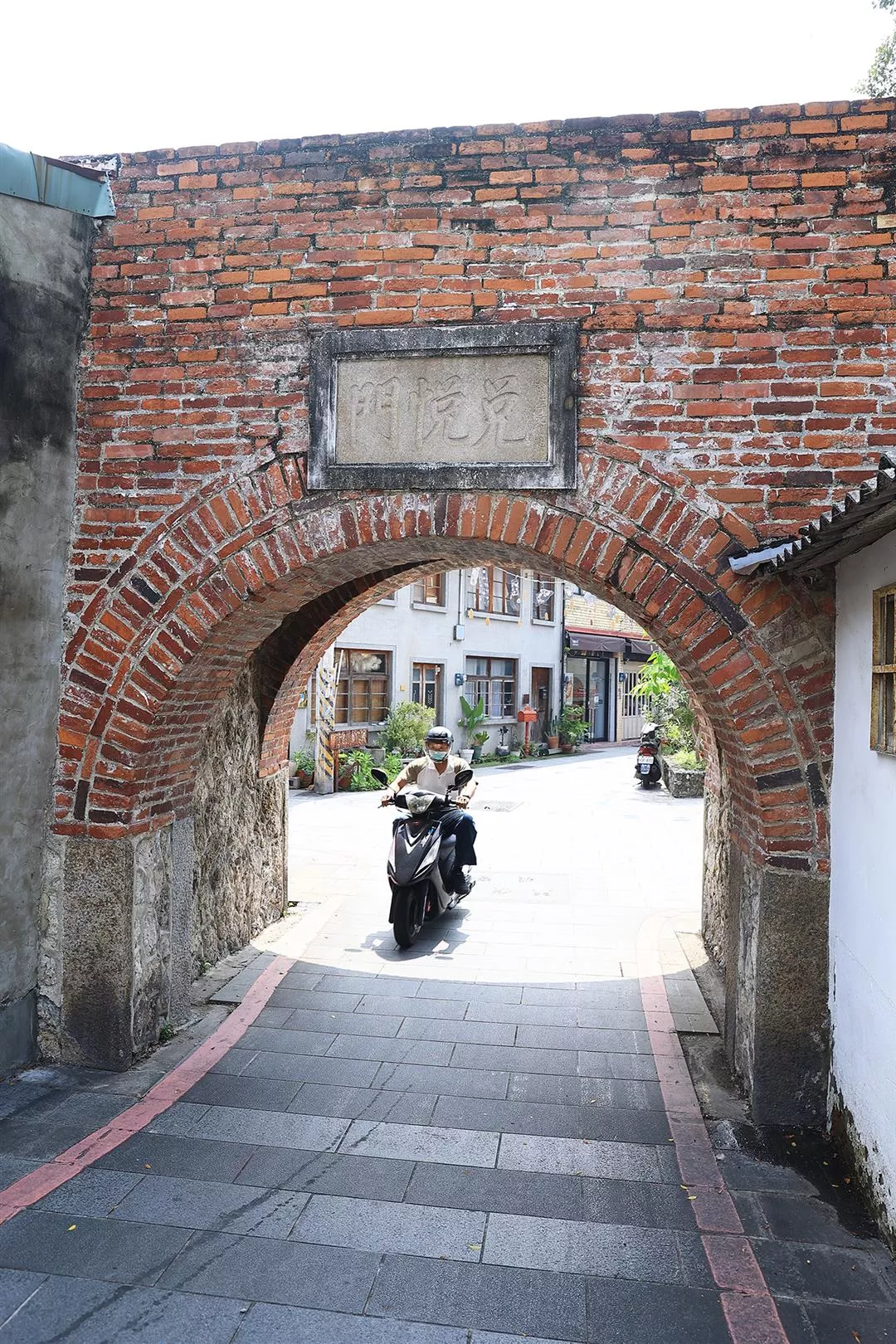
Taiwan’s old capital, Tainan, is layered with history. Of the remaining Qing-era city gates, only Duiyue Gate is open to both pedestrians and vehicles.
Connections with the sea
Most of us today probably do not associate Tainan with the sea, but for Su, “Tainan is a port city—a city that owes its existence to the sea.”
Half of today’s downtown Tainan falls within the confines of a vast lagoon that no longer exists: the Taijiang Inland Sea. In days of yore, the shoreline approximately followed what is now Chikan Street. Those who ascended Chikan Tower could gain panoramic views over Taijiang. As the lagoon silted up, the town sprawled westwards. The remnants of Taijiang continued to enable waterborne trade in the area known as Wutiaogang—a commercial hub that evolved into the most prosperous place beyond Tainan’s erstwhile city boundaries.
Su says that we can still trace Tainan’s past relationship with the sea by going westwards along the historic Minquan Road. Near the Chuan Mei Theater in West Central District we come across Dajingtou, a municipal heritage site whose name refers to a quay beside a big well, reminding us that this place used to be adjacent to the sea. In the days when maritime trade was booming around Taijiang, ports were important places where ships could take on fresh water, and there were usually wells near where vessels berthed. “This suggests that the land met the sea here.”
Su explains that in the 17th and 18th centuries, the seacoast used to be around today’s Ximen Road. The old coastline is dotted with many temples with rich histories of their own. Most of their patron deities—such as Wangye, Mazu, Shuixian Zunwang, Baosheng Dadi, and Chifu Qiansui—are related to the sea. These temples all face west, an orientation that further hints at their connections with the sea.

A hilly city
The eastern part of downtown Tainan is a tableland, interspersed with the Seven Hills of the Capital. Owing to several centuries of development, however, the ups and downs of the terrain are no longer obvious to the eye. Nevertheless, Su tells us that stairs continue to offer clues to how architects responded to the undulating topography here.
Beiji Temple on Minquan Road occupies what was called Jiuling (“Eagle Hill”), the highest point of Tainan’s Old Town. To pray here, we need to ascend a few steps from Minquan Road before we’re on a level with the original temple gate. We find ourselves climbing more steps as we move through the interior of the temple. The topographical contour here accentuates the impression of the temple rising above the din of the mundane world.
There are also steps that lead to the sea. Su says that Tainan’s Grand Mazu Temple used to be situated on the shore, with its gate facing the Taijiang Inland Sea. Although the shoreline has since retreated westwards, we can imagine what it was like when the temple square was nearly on the same level as the seashore. To enter the temple, pilgrims had to negotiate short flights of stairs—a process of ascent that must have felt like journeying inland from the seashore. Taking advantage of the natural terrain here, our predecessors created a physical space that embodies their idea of undertaking a pilgrimage to worship the sea goddess Mazu.
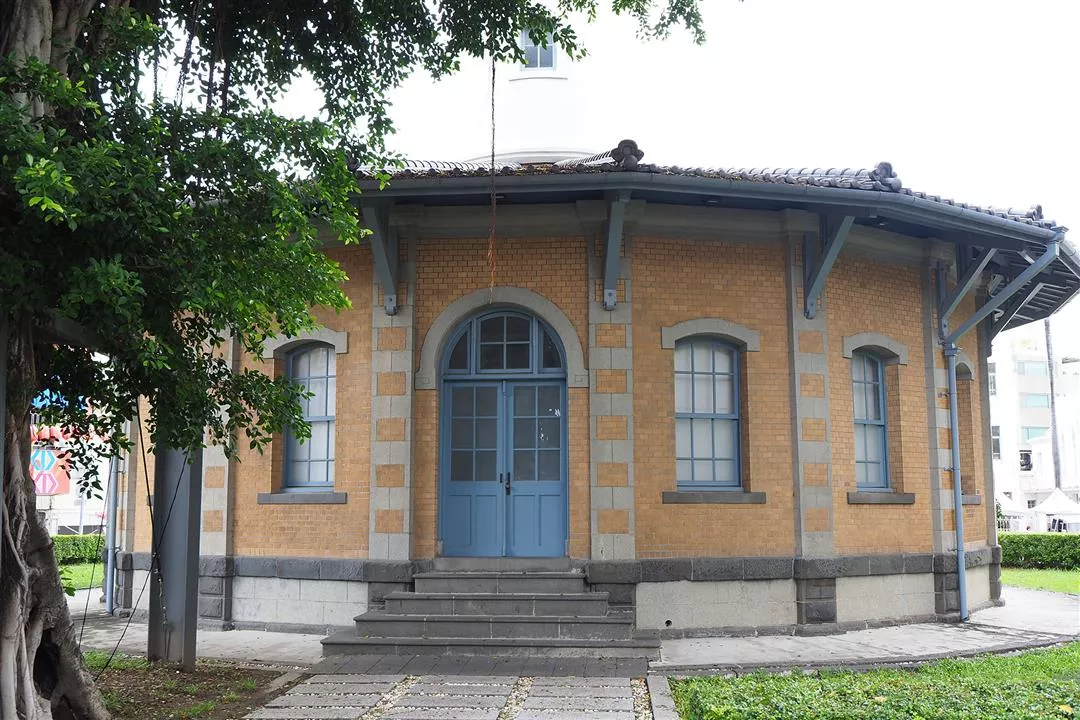
Built in 1898, the former Tainan Weather Observatory is the oldest remaining building of its kind in Taiwan.
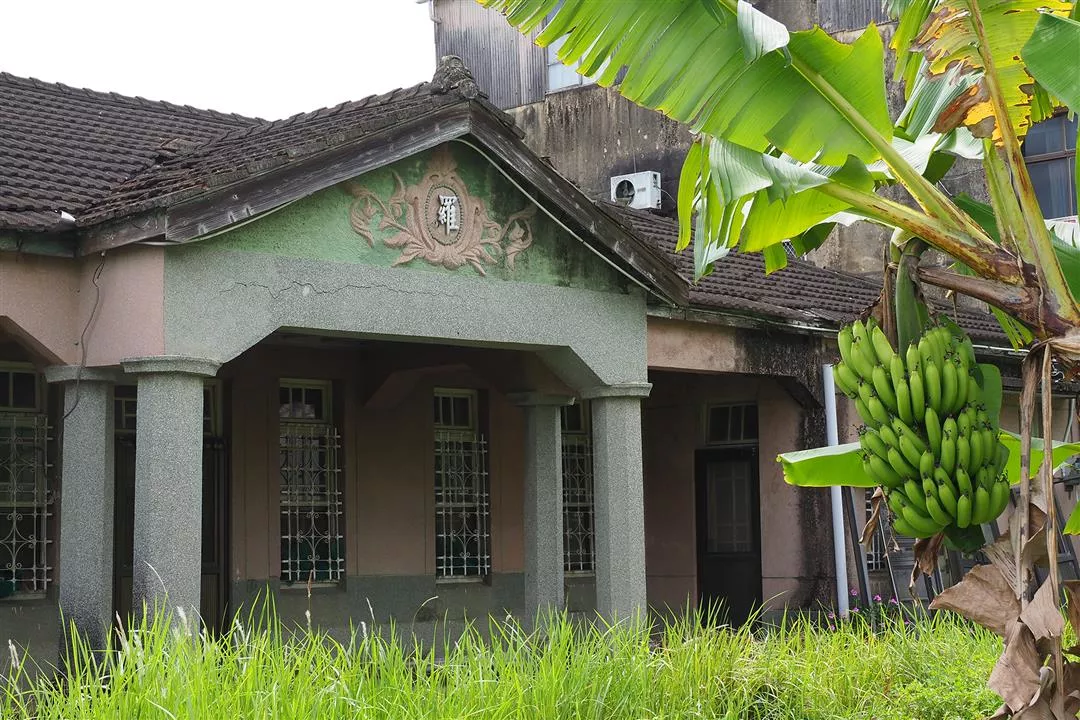
An old house with a banana tree outside constitutes a quintessentially Taiwanese scene.
Architectural charm
From the Dutch age, through Koxinga’s Kingdom of Tungning (1661–1683) and subsequent Qing rule, to the Japanese period and beyond, each era has bestowed its own legacies upon Tainan’s streetscape. It is precisely this historical heritage that constitutes the charm of the city.
Near the Mazu temple, our eyes are caught by a swathe of red-brick buildings which have witnessed the vicissitudes of Tainan’s history. Surveying the narrow streets, we catch sight of temples nestled among low buildings. Occasionally we see swallowtail roof ridges, which stretch to the sky like the ethereal long sleeves in Chinese opera, as well as elegantly contoured gables. Everywhere we look, surprises await us.
Like a living museum of architecture, Tainan embraces an eclectic range of architectural styles. Public and official edifices such as the former Tainan Prefectural Hall (now the National Museum of Taiwan Literature), the old Tainan District Court (now the Tainan Judicial Museum), and the former Tainan Weather Observatory (now used as a museum of meteorology) are a legacy of the Japanese era. Residential and commercial buildings here display both Japanese and Western influences, with floral shapes in carved stucco adorning the gables and parapets; the terrazzo facades, decorative glass panes, and cast-iron fittings testify to the deft hands of artisans in the past.
Houses here built in the wake of World War II more clearly demonstrate modernist aesthetics, with their fronts sporting both symmetrical and asymmetrical designs. Cheng Hsien-hsin, a professor of urban planning at National Cheng Kung University with a longstanding interest in revitalizing Tainan’s historic neighborhoods, comments on the city’s wonderfully diverse architectural heritage: “The continuous existence of the old houses ensures the survival of these [architectural] elements, turning the city into a veritable living museum.”
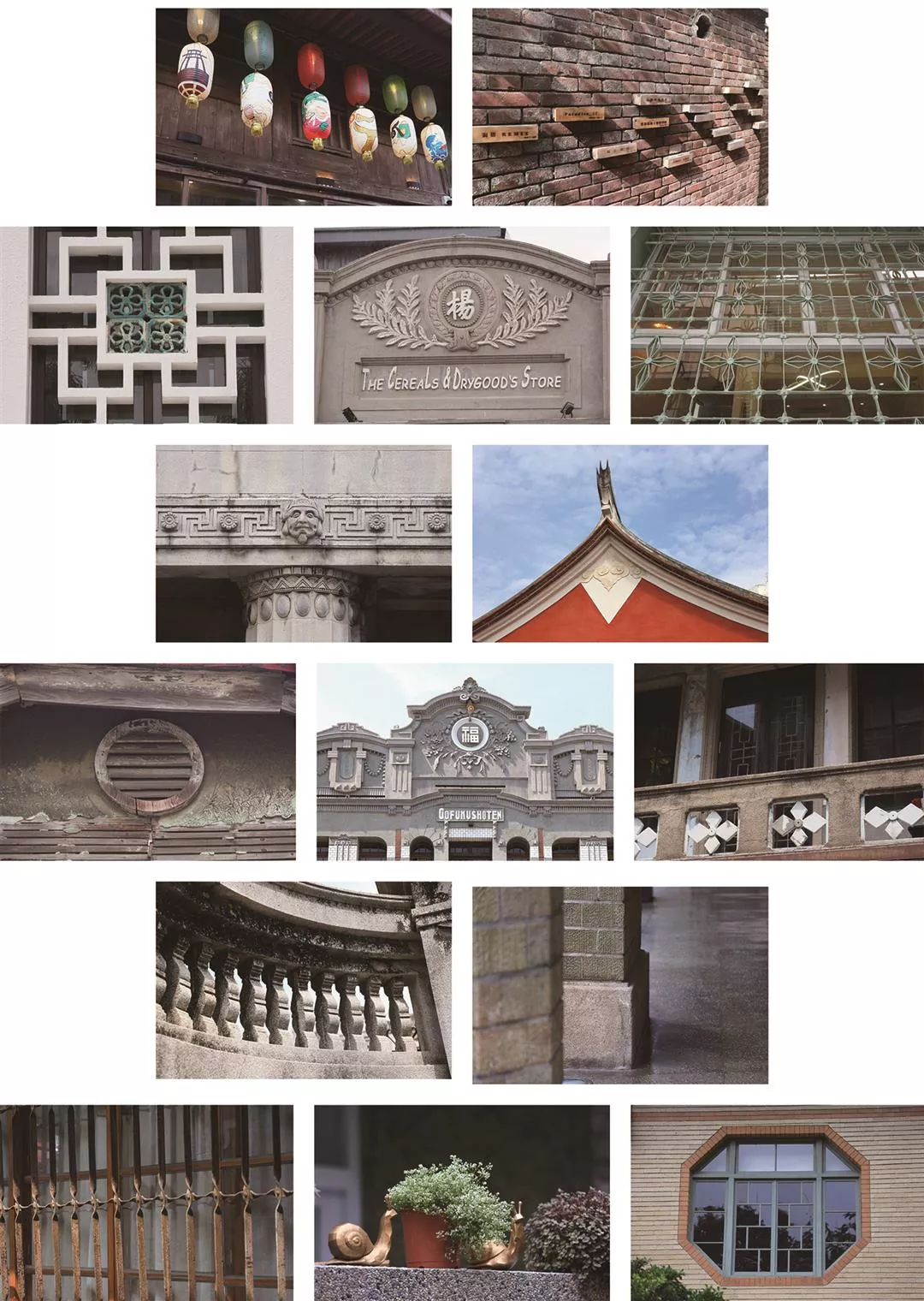
Architectural details such as carved stucco decorations, terrazzo, ornamental cement tiles, red brick walls, swallowtail roof ridges, ceramic wall tiles, and decorative metalwork turn Tainan into a city that never fails to please and amaze visitors.

Cheng Hsien-hsin is a major contributor to the revitalization of Tainan’s “historic street districts.”
Preserving historic districts
In 2012, after the amalgamation of Tainan City with the former Tainan County, the new municipality promulgated Taiwan’s first Ordinance for the Revitalization of Historic Street Districts. “Tainan had been working towards becoming Taiwan’s ‘capital of culture.’ At the time, we believed there should be a top-down cultural policy to guide public initiatives in conservation and development,” Cheng explains.
Efforts to revitalize Tainan’s historic buildings have been ongoing since the 1990s, with the involvement of non-profits and the private sector gradually gathering momentum. Today, visitors to Tainan love to step into the old houses that have been transformed into secondhand bookshops, restaurants, characterful nightclubs, and galleries, where they can catch vivid glimpses of the creativity and diversity of these projects of local rejuvenation.
From individual buildings to entire communities, and from non-governmental endeavors to official policies, Tainan people continue to devote themselves not only to renovating old houses but also to the larger task of preserving and regenerating the historic districts of their city.
What are those “historic street districts” which Tainan has made legal provision for? Cheng explains that the phrase refers to “environments formed by historically or culturally significant streets or by groups of buildings that carry historical or cultural meanings and are worth preserving and revitalizing.” The concept does not emphasize the architectural features of any specific building, but rather the sense of integrity and locality that characterizes a particular environment.
Cheng says that conventionally, urban planners draw on quantitative population data to determine the required scale of new infrastructure. Their focus on development tends to overlook the historical contexts of the districts they are making plans for. Projects dedicated to historic districts seek to redress the oversights of conventional urban planning, but their ultimate goal is not merely to preserve cultural heritage, but to enable the regeneration and reuse of space as well.
“Our approach is to reexamine and retrace historical textures and put forward advice about urban design, development, and the revival of districts, helping to bring out a positive urban landscape.”
Tainan’s Cultural Affairs Bureau and Urban Development Bureau have joined forces to facilitate the execution of the plans. Cheng tells us that the Cultural Affairs Bureau provides incentives—such as funding for architectural renovation, cultural events, education, and outreach—to encourage the preservation and revitalization of the city’s old buildings. The Urban Development Bureau, on the other hand, serves as a gatekeeper, implementing official policies to ensure that development does not get out of hand. Cheng describes the roles of the two bureaus as “carrot and stick”: only through their close alliance is the vision of urban regeneration likely to come true.

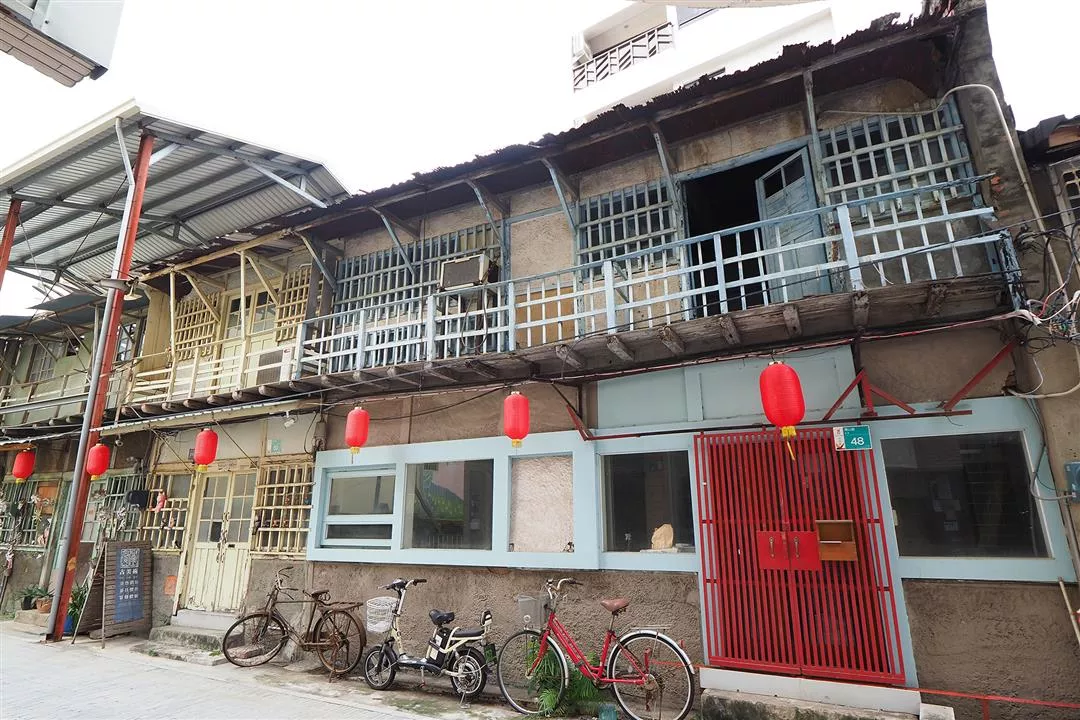
The concept of historic districts does not emphasize the architectural features of individual buildings, but rather the sense of integrity and locality that characterizes a particular environment. It respects the historical textures and dynamic development of these urban districts. The photos evoke the atmospheric scenes of old houses and trees near Tainan’s Qingshui Temple.
Reevaluating development
Following the designation of historic districts, some local road projects have been reevaluated. Cheng mentions the surroundings of Qingshui Temple as an example. Because the place was named as a historic area, the Cultural Affairs Bureau suggested that a new road plan be scrapped. A comprehensive review conducted by the Urban Development Bureau supported this recommendation, and construction was called off in order to preserve the historic character of the place.
Thus far, Tainan’s Cultural Affairs Bureau has designated several historic districts with a total area upwards of 1,000 hectares, including the Old Capital (Fucheng, encompassing the Central and Buffer Zones), Xinhua, Madou, Yanshui, and Anping/Kunxiwan. The achievements have been documented by architect David Yang in a book commissioned by the Cultural Affairs Bureau that tells the story of each of these revitalization projects.


Tainan’s historic neighborhoods attract many foreign tourists, who love to explore the hidden charms of the back streets here.
A living museum
In historic Xinhua, for example, Yang observes that the houses lining Zhongzheng Road, in the old part of town, can be traced back to the Japanese age. In keeping with the preferred style of the time, shop owners here liked to face their walls with terrazzo, embellished with floral patterns and their business names in carved or molded stucco. With their facades displaying Western classical motifs, the rows of terraced houses here breathe the spirit of their age into the streetscape.
The facades of the buildings on the western side of the road were renovated in 2023 through a project funded by the Cultural Affairs Bureau. In 2024 the facades of five old houses on the eastern side were also restored. These historically important spaces in Xinhua have thus been brought back to life. In addition to repairing the frontages, the work included the partial removal of rooftop sheet-metal structures and tidying up unsightly pipes and cables. “While these were all relatively small jobs,” says Yang, “they required thorough discussion—the Cultural Affairs Bureau had to work very hard.”
If the government is committed to helping renovate buildings of public significance, the restoration of privately owned old houses relies on private-sector input. We meet with Claude Hsu, chief executive officer at Mogather, a Tainan-based social enterprise. A longstanding contributor to Xinhua’s social wellbeing, Hsu used to work for community development projects and is now focusing on renovating old houses.
“Our team has so far preserved two historic shops on Zhongzheng Road. One is Changtai Pharmacy [now operating as Tainan Nine Town]. The other is the 145-year-old Jinfa Rice and Grain Store. Our experiences with both premises are similar: we got wind of their being put on the rental market and quickly intervened to carry out restoration and conservation work before we started to think about how they might operate commercially. In both cases, the preservation of cultural heritage took precedence. Commercial use came later,” Hsu says. “By letting every old house stay on to tell its own stories, we’re giving the entire district a chance to become a museum of living history.”

Xinhua Old Street owes the renovation of its historic facades to joint public and private-sector efforts.

Tainan is a perfect place for “dreaming, working, falling in love, getting married, and enjoying our lives.” Over the last four centuries, generations of locals have joined forces to preserve their collective memories.




@List.jpg?w=522&h=410&mode=crop&format=webp&quality=80)


